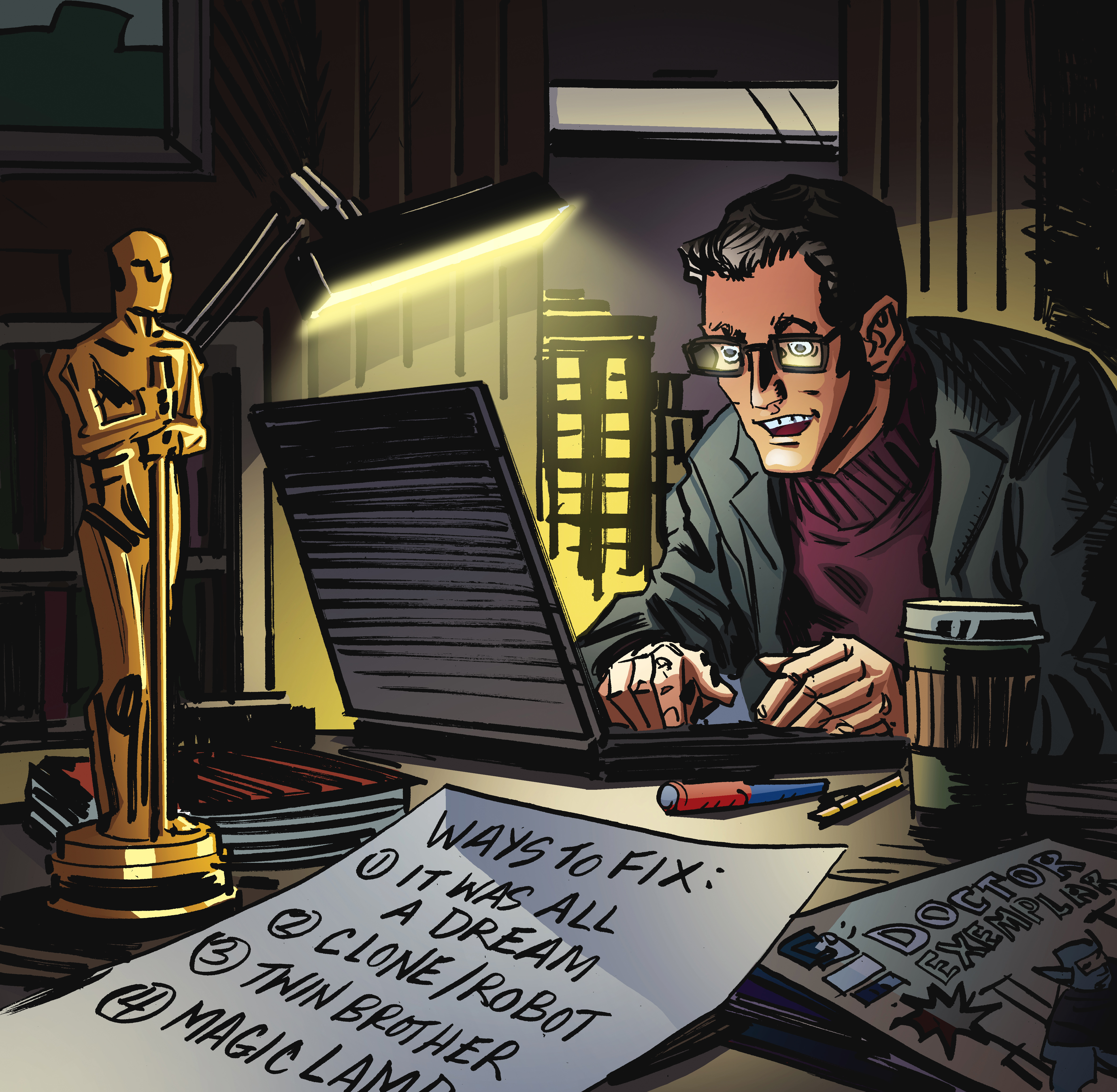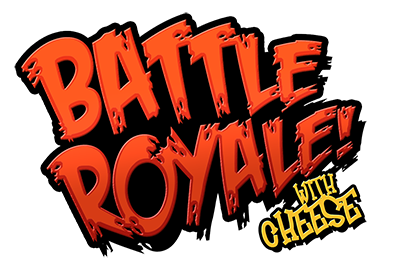Step 2: The Concept
I’ve been a game designer for twenty-five years. I’ve made card games and PC games and mobile games, console games, VR games, role-playing games, puzzle games, cheap casual games and AAA hardcore games. And I can tell you that there’s one tried and true method that game designers most often use to design a game. Start with a game mechanic that shows potential, a tentpole that people can get behind. Transforming robots. A guy who can switch heads and each head has a unique ability. You pitch the idea around, interest grows, and then you build out other game features and narrative context that support and enhance that original core gameplay. It happens slowly, brick by brick, until finally the whole game emerges.
I did it all wrong with Super Powered Smash Masters.
I started with the humor, and then built a game around that. I imagined a card game with epic superhero fights and an emphasis, not on rules and math, but on humor and fun.

Then I brainstormed a few card titles – just the titles, just to get things going. I wasn’t even really thinking about how they would work yet. I hit on a few puns, and the puns suggested powers, and it all just kind of connected together very quickly like a chain reaction.
I started brainstorming superhero puns and silly thoughts and my favorite comic book tropes, especially the ones that suggested gameplay and began listing them as bullet points. I just spit it all out onto the page. Blank pages are the arch enemies of all creative types, whether you’re an artist, a writer or a game designer. They must be fought! I fight them with brainstorming. It’s my Thanos glove. Brainstorming is really one of my favorite things to do. One thing to understand about the process is that it’s good to build up some momentum, especially when you’re starting something new. If it came to me, I wrote it down until I had a sizeable list of ideas. I never slowed down to judge if a particular idea had merit. The judging came later.
Next I read through my list and started filling in some descriptions and humor text to go along with each title. I tried to do that with everything in my list. If I had a really hard time with one of them, I decided the title might not be that strong and moved it a little further down the list. Here are a few original examples:
- KRAKA-THOOM! (group attack) Explosions. The entire team is stunned. Nuff said.
- Back To Formula (stun): Random time vortex. Your hero becomes a baby and must be burped and re-trained.
- Invisible Motorcycle (stun) where did you park your ride???
- Futility Belt (stun) out of commission while you fish around for the perfect gadget.
- Alien Symbiote (dodge) Get it off me! Get it off!
At the same time, when I was struggling a bit with this step, I started working on a second list of superhero names. Fun characters who might be driving the action of these cards. This is a technique I use quite often. I trick myself into doing work. When I’m struggling with one part, I jump over to another part that I’m having more fun with. It’s like playing hookie. Either way, the game’s getting designed. Progress is being made.
Later I went back through the list and added gameplay categories in parentheses, like “dodge” or “stun”.
When I had about a page or so of this stuff, I sent it over to my partners Ben Lichius and John O’Neill and pitched the game to them, which was then under the working title Battle Royale With Cheese.

I am constantly pitching game ideas to Ben and John. Constantly. When I tell them I have a new idea, I expect them to groan and roll their eyes. They’re usually supportive, but it’s rare that a game goes beyond the pitch. But Ben and John took to this idea very quickly. They were seeing the potential, getting the jokes, thinking of their own ideas and related ramifications. I felt encouraged to keep going. I just had a feeling I was onto something. Things just kept flowing.
After I had some material to work with, I started narrowing the broad ideas down a little until I had a few different types of cards that could work together. Then I wrote a brief game walkthrough. Basically a step-by-step directions of how to use the cards I was imagining. This is always ENORMOUSLY helpful.
Like I said, all of this happened very fast. Within a few days of part-time attention, I had the bones of a game.
Come back next week for the next installment of “How to Design Super Powered Smash Masters!”


Comments
No Comments